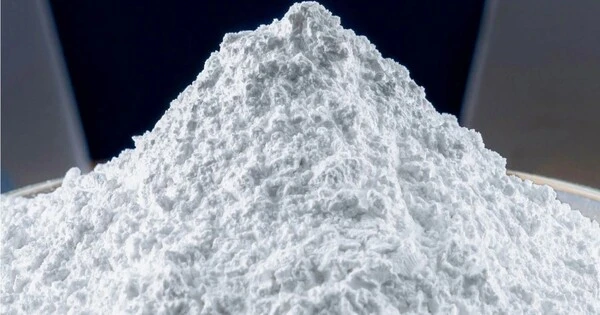Caesium stearate is a metal-organic compound, a salt of caesium and stearic acid with the chemical formula C18H35CsO2. The compound is classified as a metallic soap, i.e. a metal derivative of a fatty acid. It is the salt formed by the reaction of caesium hydroxide (CsOH) with stearic acid, which is a fatty acid commonly used in a variety of applications.
Preparation
Caesium stearate can be prepared by the reaction of caesium carbonate with stearic acid.
Synthesis
Caesium stearate is typically synthesized in the laboratory by reacting caesium hydroxide (CsOH) or caesium carbonate (Cs₂CO₃) with stearic acid (C₁₈H₃₆O₂). This reaction produces the stearate salt and water or carbon dioxide as a byproduct, depending on the base used.
Properties
- Chemical formula: C18H35CsO2
- Appearance: Caesium stearate is typically a white or off-white powder or solid
- Molar mass: 416.37
- Solubility in water: soluble in hot water
- Melting point: It has a relatively high melting point, around 240–260°C, depending on the purity of the compound.
- Electrical Conductivity: Like other stearates, caesium stearate is a good conductor in its molten form due to the presence of caesium ions.
Chemical Behavior
- Basicity: As a salt of a strong base (caesium hydroxide) and a weak acid (stearic acid), caesium stearate is relatively basic and can form solutions with an alkaline reaction.
- Thermal Stability: It remains stable at relatively high temperatures and doesn’t decompose easily, which makes it useful in some high-heat processes.
Toxicity
While caesium itself is not highly toxic, its compounds, including caesium stearate, should be handled with care. Direct exposure to caesium salts should be avoided, especially in large quantities, as they may cause irritation to the skin and eyes or other health effects if ingested.
Applications
- Lubricant: Caesium stearate is used as a lubricant in some industrial processes due to its ability to reduce friction.
- Soap: As a stearate salt, it is used in the production of certain types of soap, especially for high-temperature applications.
- Stabilizer: It can also serve as a stabilizer in some formulations, particularly in the context of metal soaps or in making wax-based products.
- Cosmetics: It may be used in the cosmetic industry for formulating creams, lotions, and other personal care products due to its emulsifying and stabilizing properties.
















